
BHUTAN
The Land of the
Thunder Dragon
Embark on a transformative journey to Bhutan, where ancient traditions, pristine landscapes, and spiritual serenity converge in breathtaking harmony. Discover the mystical realm of the last Shangri-La on Earth, where each moment unfolds into a profound journey of discovery and enlightenment.
Experience the exclusive invite to Bhutan's Annual Royal Highlander Festival amidst the majestic Himalayas. This once-in-a-lifetime event celebrates the unique culture and traditions of the Laya people, featuring their distinctive attire, the famous Yak Dance, and stunning highland scenery. The festival fosters community spirit, offers a glimpse into the timeless Layap way of life, and showcases local crafts and delicacies. It’s a transcendent celebration of Bhutanese mysticism, uniting nature, culture, and spirit, while promoting cultural tourism in this remote and picturesque village.
Alternatively, immerse yourself in Bhutan's beauty through the everyday life of its people. Explore secluded communities like the Monpas and Buli village, where ancient traditions and warm hospitality invite you to experience life as the locals do. From snow-capped mountains that elevate the spirit to lush valleys that rejuvenate the senses, each step reveals a new facet of Bhutan's rich heritage. Explore ancient monasteries, reflect on your own journey, and immerse yourself in the profound tranquility that defines Bhutan as the 'land of happiness.'
BE EDITION: BHUTAN
-
Embark Into The Ancient Kingdom Of The Thunder Dragon: Hidden Villages, Age-old Monasteries, And Timeless Tales Of Bhutan
Day 1: Paro to Thimphu
Day 2: Thimphu to Punakha
Day 3: Punakha to Phobjikha
Day 4: Phobjikha to Monpas Village, Jangbi
Day 5: Meeting The Monpas Community, Before Proceeding To Buli, Zhemgang
Day 6: Buli Tsho (Lake), Buli Village/community
Day 7: Trong Heritage Village to Phobjikha Valley
Day 8: Drive Back To Paro, Past Lawala Pass
Day 9: Hiking To Taksang Monastery (Tiger’s Nest)
Day 10: Home Sweet Home!
EXCLUSIVE annual LAYA FESTIVAL, BHUTAN
-
Trek To The Home Of The Laya, Bhutan: Exclusive Annual Royal Highlander Festival, Initiated By His Majesty, King Of Bhutan
Day 1: Arrival At Paro International Airport, Bhutan
Day 2: Drive To Gasa Via Punakha Valley / Camp At Tongchudra (3300m)
Day 3: Hike From Tongchudra, Gasa (3300m) To Laya (3,800m)
Day 4: Opening Ceremony Of The Royal Highlander Festival In Laya
Day 5: Exploring Laya Village
Day 6: Drive To Punakha Valley (1500m) And Back To Paro (2200m)
Day 7: Hike To Taksang Monastery (The Tiger’s Nest)
Day 8: Departure From Paro; Home Sweet Home!

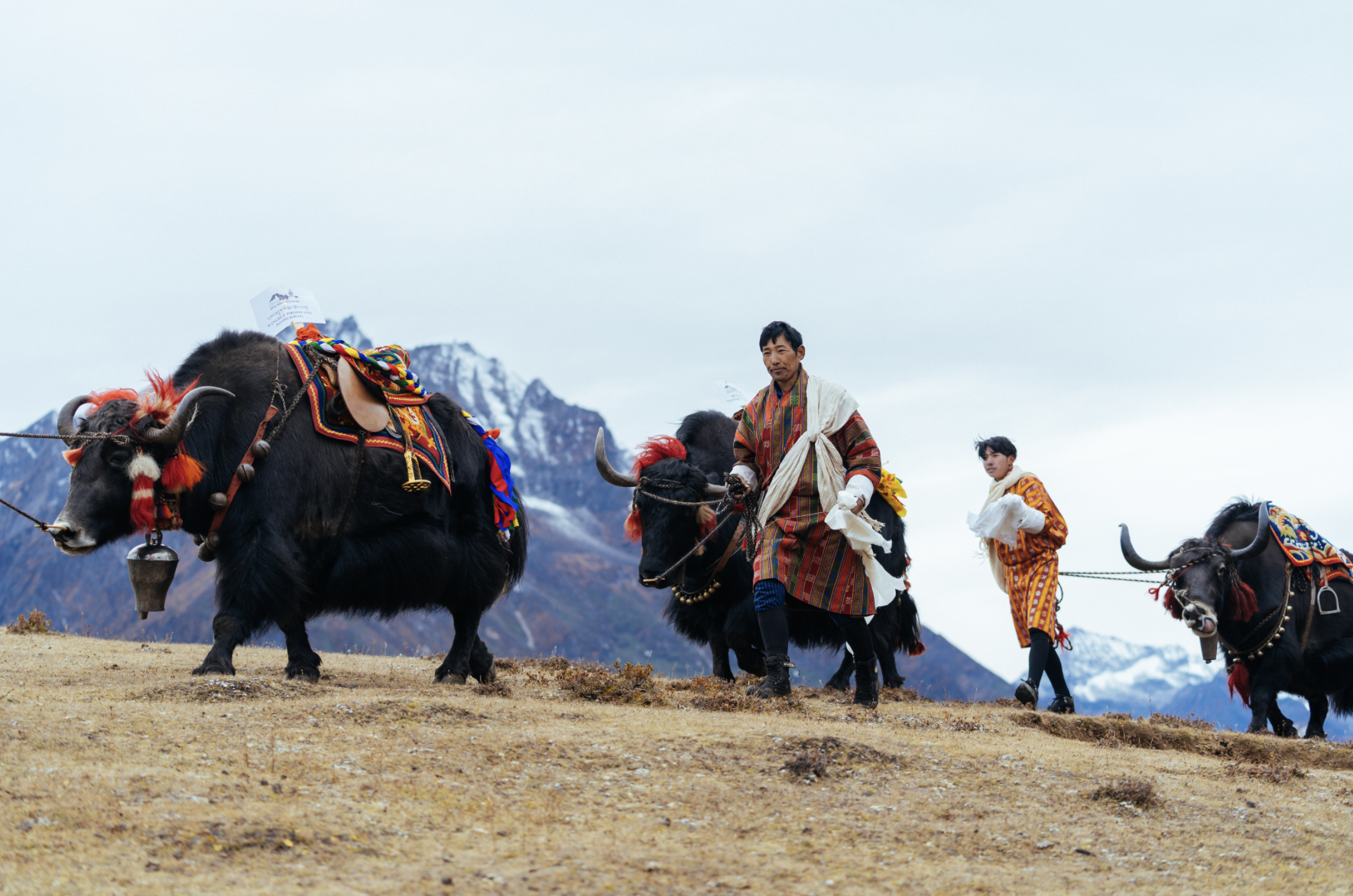



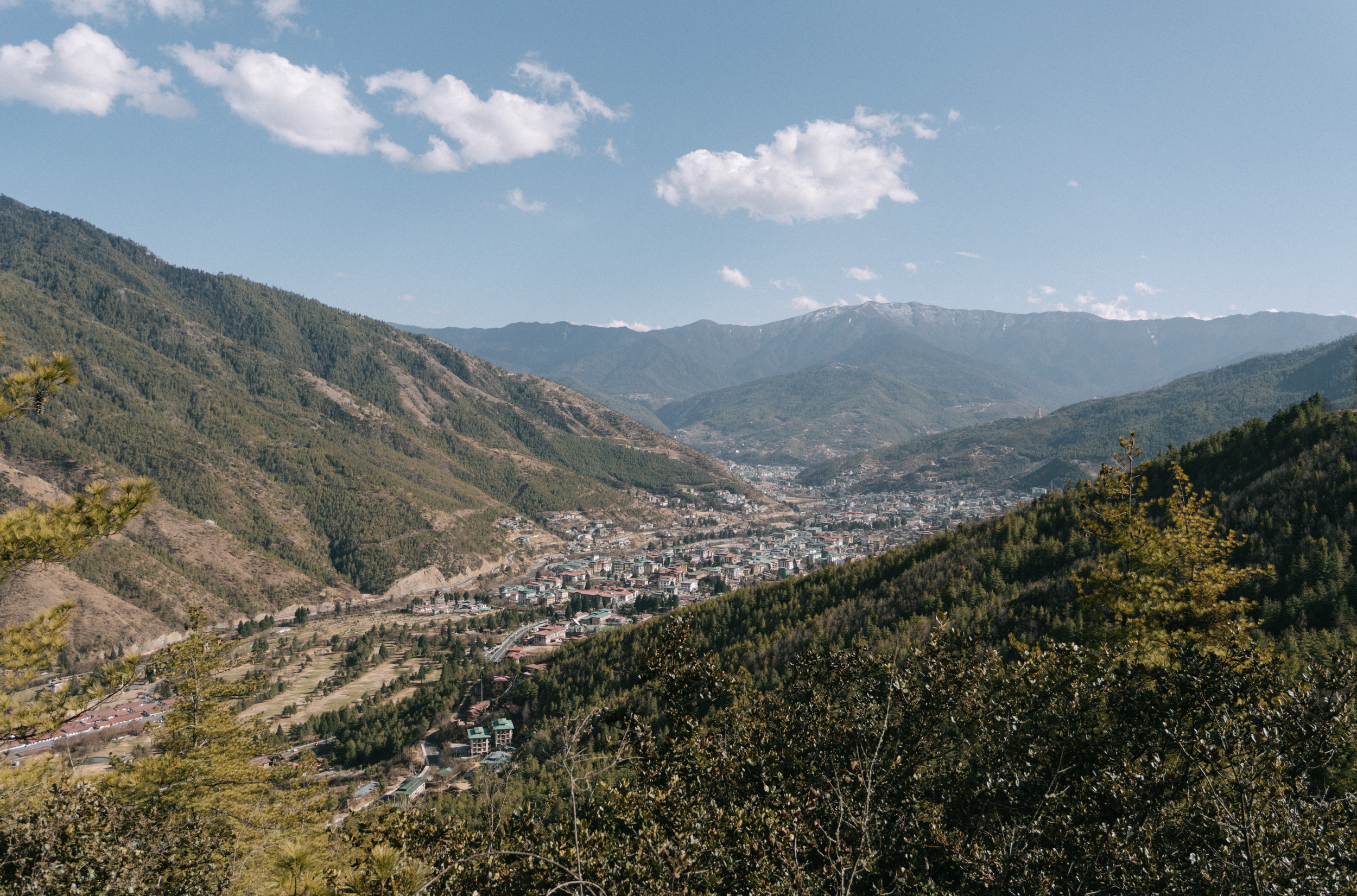


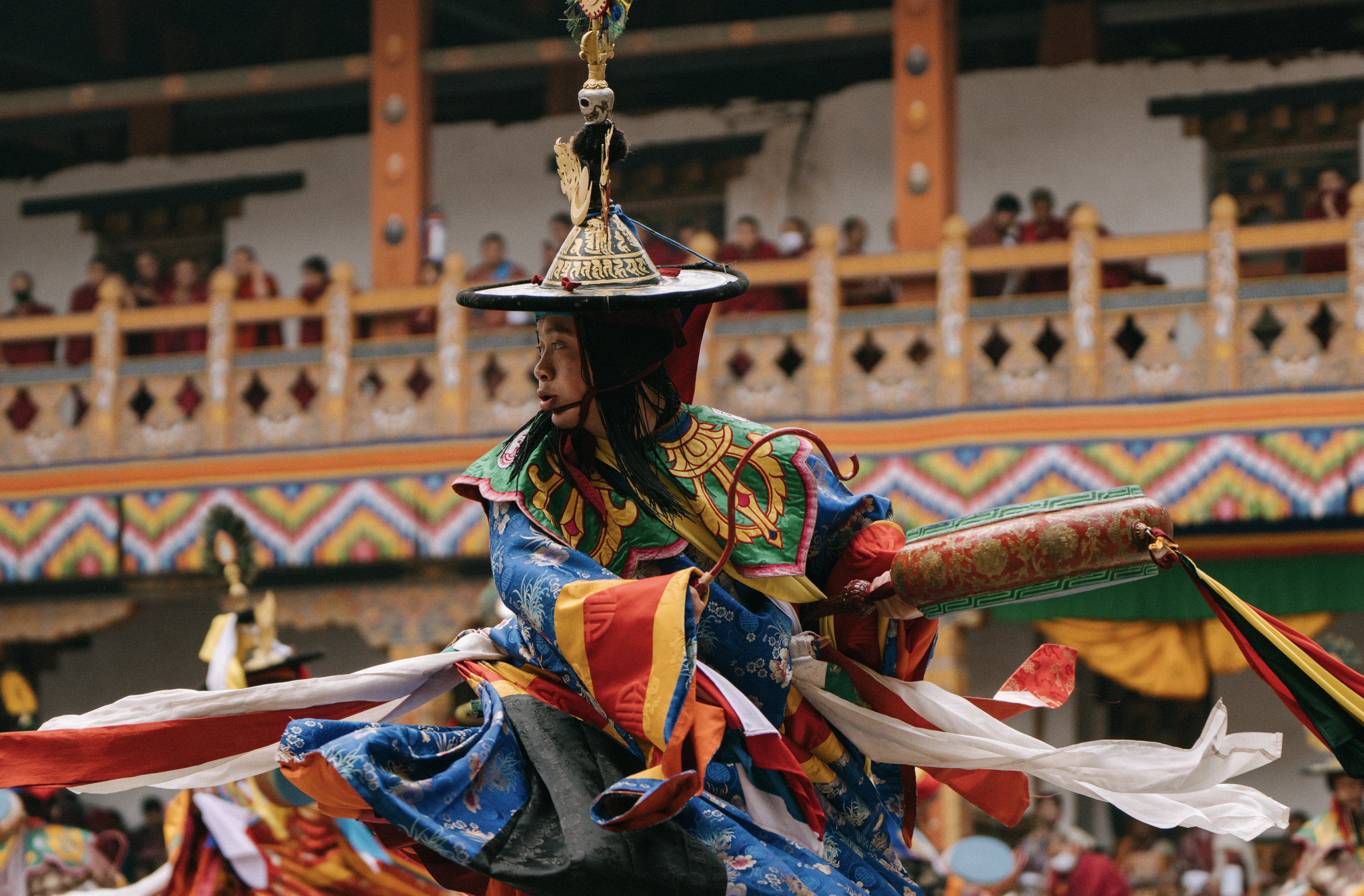
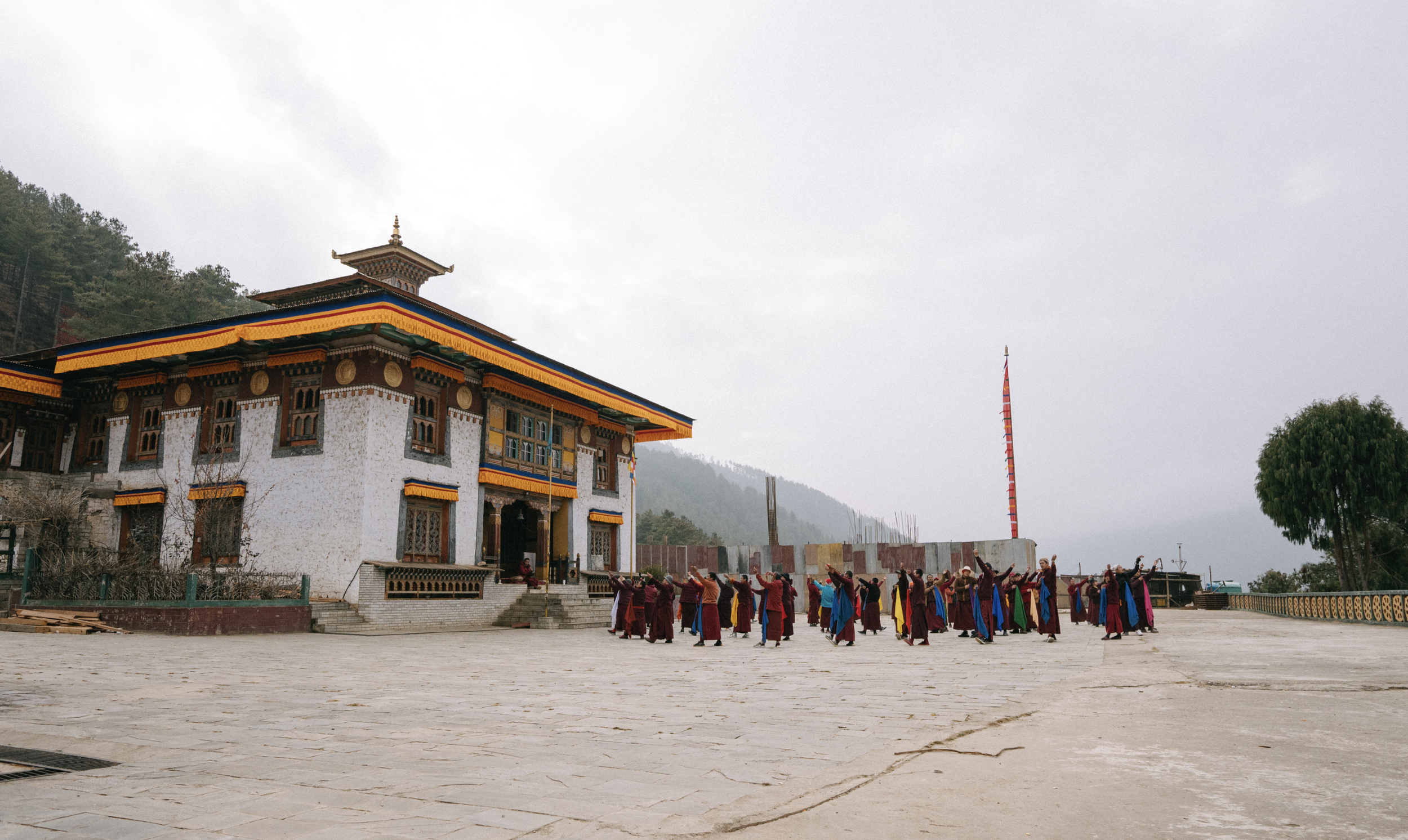
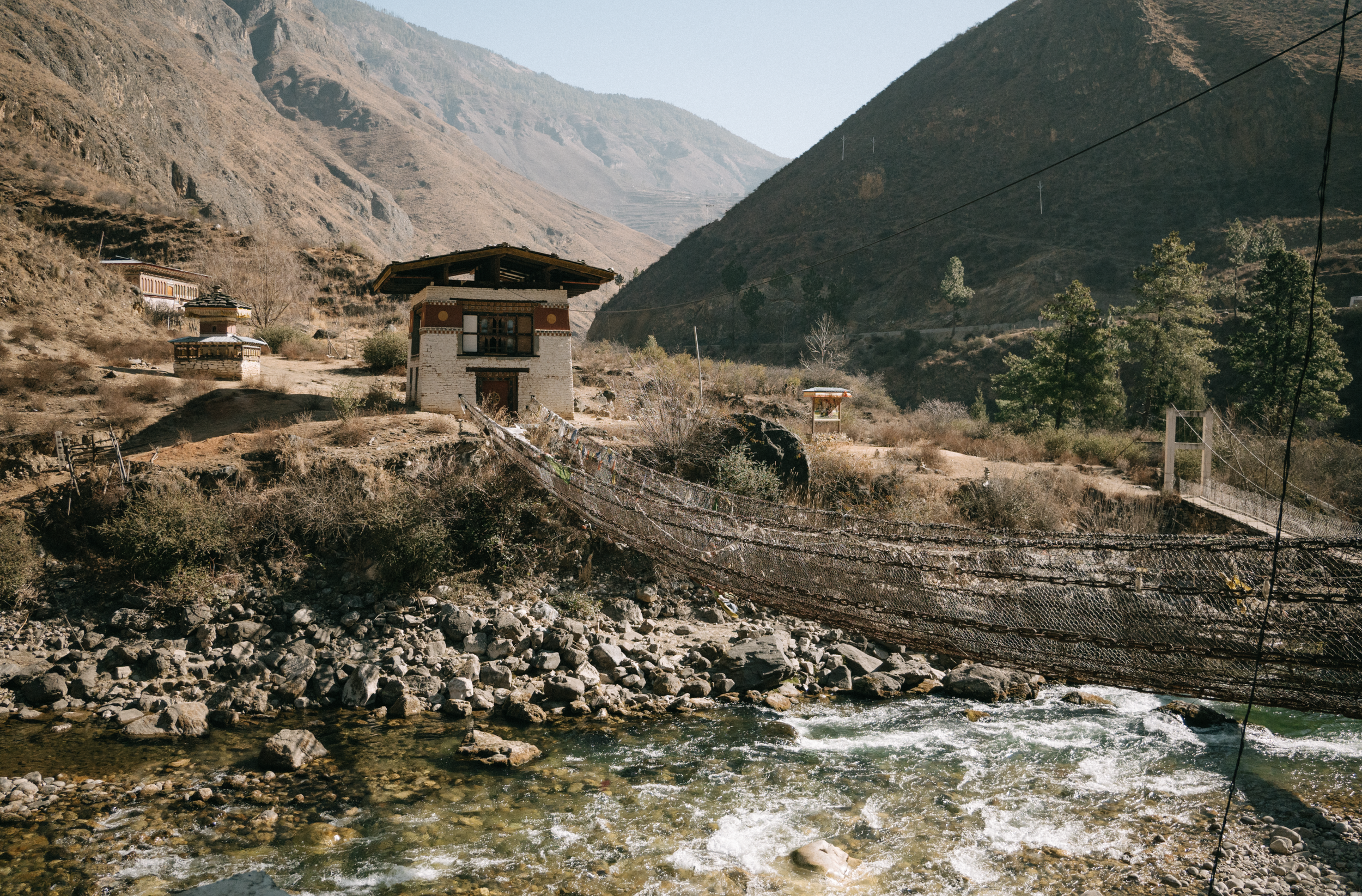
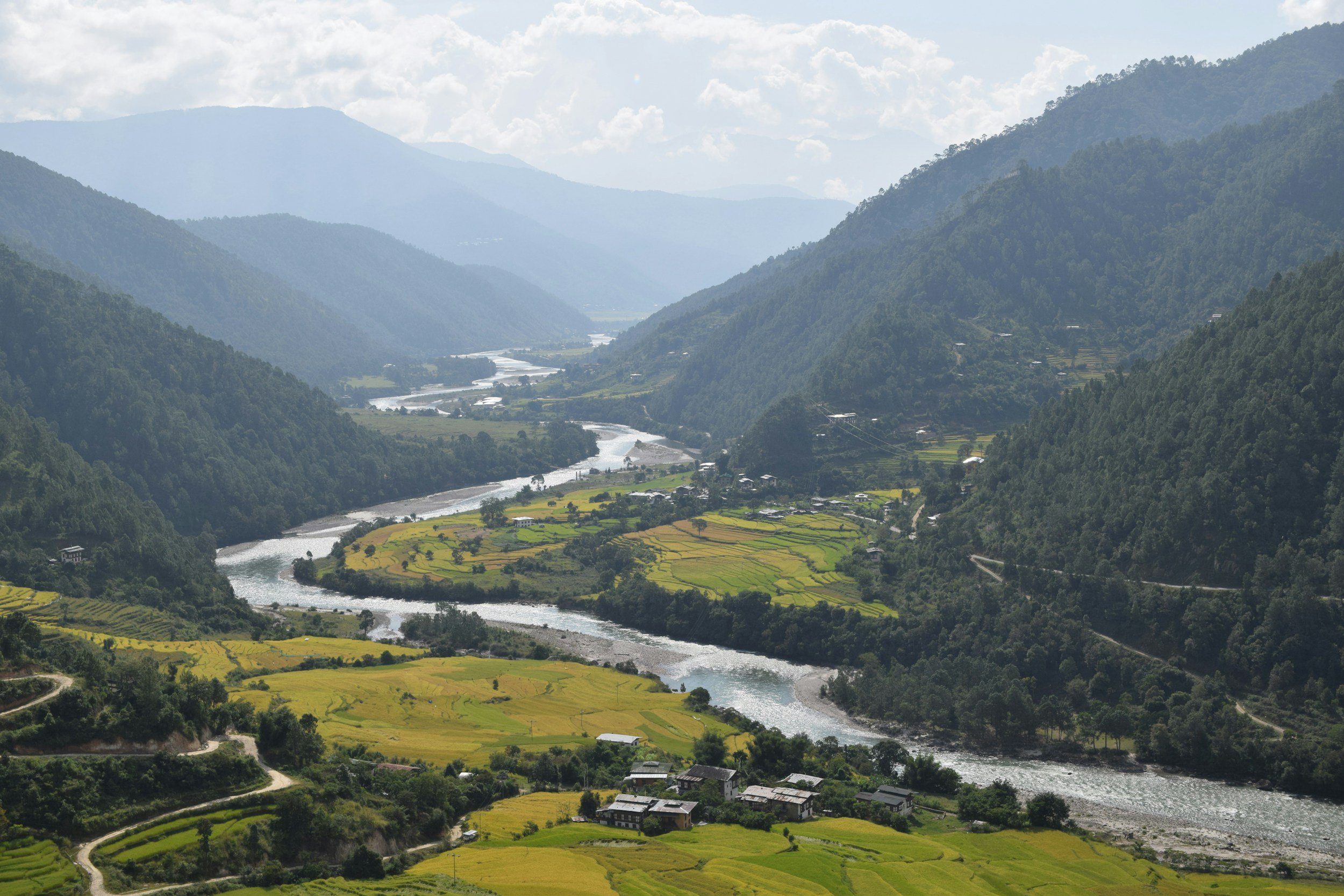

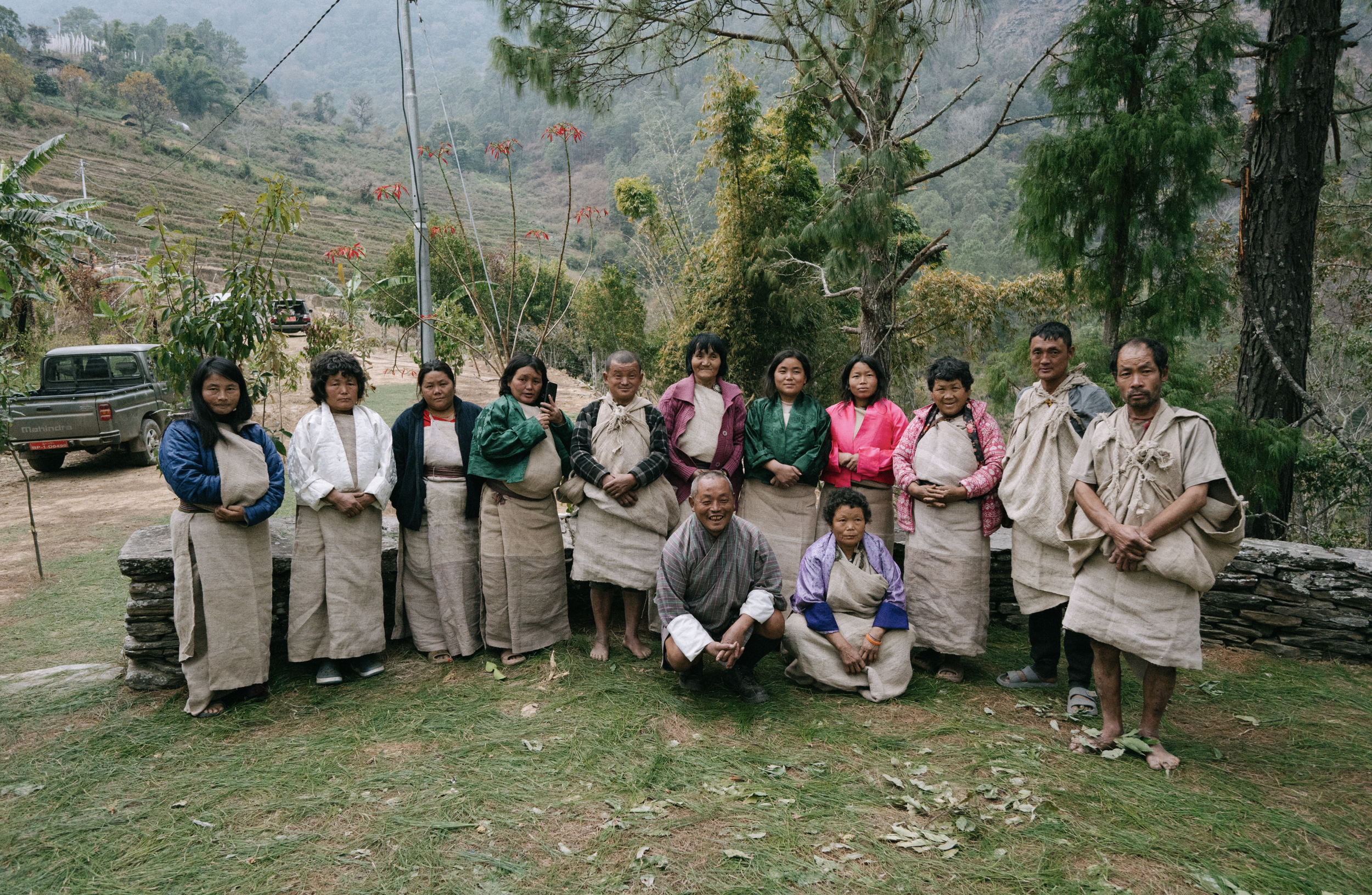
BHUTAN TRIP FAQ
-
Bhutan ranks among the safest destinations globally for tourists. As a happy and devout Buddhist nation, it maintains a low crime rate, making it an exceptionally secure place to visit. While crime is uncommon, even petty crime, it's always advisable to remain vigilant about your surroundings.
In the countryside, you'll be in the capable hands of our seasoned Bhutanese guides and drivers well-versed in the terrain and surroundings. Additionally, your village community accommodations and campsites will be provided by trusted local families, ensuring a warm and secure experience throughout your journey.
-
If you hold a Singapore passport, you will need a visa for Bhutan. Rest assured, our trip cost covers the payment and arrangement of your visa.
If you hold a passport from any country other than India, you will also need a visa for Bhutan. Let us know, and we will assist you with the application. The cost and arrangement of the visa are included in your trip package with Beyond Expeditions, ensuring a seamless and hassle-free process for all our travelers.
Additionally, the Bhutan Sustainable Development Fee (SDF) costs US$100 per person per night for international tourists. This fee is already included in the total price of the tour, so you won't need to pay it separately. The SDF is used to support Bhutan's sustainable tourism initiatives and conservation efforts, ensuring that tourism benefits the environment and local communities.
-
Travel insurance is your safety net for unexpected stuff like flight hiccups and surprise medical moments. It’s the unsung hero of hassle-free travel. Trust us, a bit of preparation goes a long way. So, buckle up, worry less, and let the adventures roll with the peace of mind that comes with travel insurance!
For adventures beyond 4000 meters such as this one, it’s especially important to have insurance that covers high-altitude activities. We recommend ensuring your policy includes coverage for extreme conditions and emergency evacuation.
Unsure of which to go for? Go ahead and explore and compare potential travel insurance providers!
Here is a good one.
This platform offers a comprehensive search feature that allows you to compare various insurance policies specifically tailored for adventure tours. This platform is a good kickoff for information, but just so you know, we’re not the gurus in this area. For the real scoop on coverage, exclusions, and anything special for extreme sports, reach out to the insurance companies directly. They’ve got all the details!
For those based in Singapore, consider AIG Singapore insurance. AIG Singapore offers a range of travel insurance plans designed to cater to different needs, including comprehensive coverage for medical emergencies, trip cancellations, and lost belongings. They also provide specific plans for adventure travelers, ensuring that you’re covered no matter where your adventures take you.
If you're looking for premium coverage, do consider International SOS. International SOS specializes in health and security services, offering medical assistance, travel risk management, and emergency evacuation services. -
While visiting Bhutan, being reasonably fit can enhance your experience, especially if you plan to engage in our tours that involve hikes through its diverse landscapes or endure long car rides between destinations. Many attractions, such as national parks and remote villages, will involve hiking trails that vary in difficulty. Additionally, road conditions can be challenging, requiring endurance and comfort during extended journeys. Ensuring a moderate level of fitness can help you fully enjoy the natural beauty and cultural richness that Bhutan has to offer.
-
For our Bhutan tours, you will experience a mix of accommodations, including hotels, campsites, and farmhouses.
For our main Bhutan tour, you will stay in a combination of hotels, campsites, and farmhouses. Twin-sharing rooms will be assigned for your comfort in hotels, with roommates of the same gender unless you are a couple or have made special arrangements in advance.
For the Laya itinerary, you will stay in hotels except for days 2-5 when you will be camping. This offers an incredibly authentic and adventurous experience, immersing you in the beautiful natural surroundings of Bhutan.
Please note that accommodations in rural areas tend to be more basic. Remember, you've chosen to embark on an adventure with us for an authentic and unfiltered experience, not a luxury trip. Please keep this in mind before expressing concerns. However, our seasoned guides are always ready to ensure you have a pleasant and comfortable experience as much as possible.
-
In Bhutan, the official currency is the Bhutanese Ngultrum (BTN), which is pegged to the Indian Rupee (INR). Accessing cash is possible through ATMs and banks in major cities like Thimphu and Paro. Ensure that your card, particularly one with international capability, is suitable for successful withdrawals.
Upon your arrival at Paro International Airport, you can exchange local currency at one of the airport offices after collecting your luggage. Please be prepared with sufficient USD or euros for conversion to the local BTN, as other currencies, such as SGD, may not be accepted.
Bhutan operates primarily as a cash-driven economy. While some higher-end establishments may accept credit cards, usually Visa and Mastercard, most shops and restaurants prefer cash. Be sure to plan accordingly and carry cash. Credit cards are more commonly accepted in larger hotels and some restaurants but are less common in rural areas. It is crucial to activate your overseas PIN code for card transactions.
We recommend that each individual carries a cash reserve of approximately $100 to $300 or more in U.S. dollars or euros, depending on your intended purchases and potential tipping scenarios. For your reference, the exchange rate is approximately 82 Bhutanese Ngultrum (BTN) for 1 USD. The highest denomination of the Bhutanese Ngultrum is the 1,000 BTN note.
-
Mobile phone signal quality in urban areas of Bhutan is generally reliable, but it can be inconsistent or even unavailable in remote regions. To enhance your connectivity while in Bhutan, we recommend obtaining a local SIM card upon your arrival, which you can purchase at Paro International Airport or in Thimphu. Our guides will be available to help you with this process.
For optimal telecom services, consider the following providers based on your location:
Thimphu and major urban areas: Bhutan Telecom
Rural areas: TashiCell is recommended for better coverage.
-
We strongly recommend consulting a medical professional to assess your specific health needs and adhere to Bhutan's health guidelines. Your well-being is our priority, and personalized medical advice ensures a safe and healthy journey.
Here are the recommended vaccinations for Bhutan: Hepatitis A, Typhoid, Tetanus, Hepatitis B and Rabies. For those at higher risk, consider additional vaccinations for: Cholera and Japanese Encephalitis. No yellow fever vaccination certificate is required for this country. -
As Bhutan is located at a mountainous region, the sudden change in altitude from low (in Singapore) to high (in Bhutan) could result in Acute Mountain Sickness (AMS). Although AMS sounds very serious, it's very preventable. Here are some ways you can reduce the risks of AMS:
1. Hydration: Stay hydrated by drinking plenty of fluids, preferably water, to help your body adjust to the altitude. We recommend drinking a minimum of 3-4 litres of water a day. They can be conveniently purchased in towns or small villages along the way.
2. Take it easy: Engage in light activities and avoid strenuous exercise during the first few days at higher altitudes.
3. Avoid alcohol and smoking: Alcohol and smoking can worsen the symptoms of altitude sickness. It is best to avoid them during your stay at high altitudes.
4. Proper nutrition: Eat a well-balanced diet with foods rich in carbohydrates and avoid heavy, greasy meals.
5. Medications: Consult with your healthcare provider about medications such as acetazolamide (Diamox) that may help prevent altitude sickness. It helps the body adjust to higher altitudes by increasing respiration and improving oxygenation; alleviating symptoms such as headache, dizziness, nausea, and fatigue associated with altitude sickness. It is crucial to consult with a healthcare professional before starting Diamox or any other medication, as they can provide personalized advice based on your medical history and specific needs. They will consider the potential benefits and risks to determine if Diamox is suitable for you.
6. Listen to your body: Pay attention to any symptoms of altitude sickness and inform your guide immediately if you experience any discomfort. We can provide appropriate assistance, such as oxygen supplementation or descending to a lower altitude if necessary.
Remember, everyone reacts differently to altitude, and it's important to be aware of your body's response. Please consult with your healthcare provider for personalized advice and recommendations regarding altitude sickness prevention.
-
For our Bhutan expeditions, flights are generally arranged in economy class without layovers. We handle all flight bookings, ensuring a seamless journey from your departure location to Paro International Airport (PBH). Depending on your travel dates, there might be a layover in Bangkok. The fastest route remains a direct flight through Bangkok, though guests may need to stay on the plane for about an hour. Typically, depending on the travel dates, we use either Thai Airways or Singapore Airlines from Singapore to Bangkok, and then Druk Air, Bhutan’s national carrier, to Paro.
Handling Your Own Flight Bookings: If you prefer, participants are welcome to manage their own flight bookings. We allocate a flight budget per participant, which will be deducted from the total tour cost. This option allows you to choose your preferred transit country and even arrange layovers according to your preferences. Simply secure your flight schedule and provide us with the details, and we will coordinate planning, including airport transfers, for a seamless experience.
-
Our adventure starts at Paro International Airport (PBH), located about 6 kilometers (4 miles) from Paro, the serene gateway to Bhutan. The drive from the airport to the city will take approximately 15 minutes.
Paro, nestled amidst breathtaking scenery, combines ancient charm with tranquil landscapes, inviting exploration of its rich cultural heritage, serene monasteries, and the peaceful rhythm of local life.
-
We aim to streamline your travel experience as much as possible. On our group expeditions, you have the flexibility to either meet at Paro International Airport upon arrival or coordinate offline with fellow travelers to check in together. Choose the option that best suits your preferences.
Lastly, upon your arrival at Paro International Airport, after retrieving your baggage, our dedicated guide(s) will be there to warmly welcome you at the immigration exit, identifiable by the Beyond Expeditions logo in a photo they will be holding. They are already included in the WhatsApp group chat with you, so in the event you inadvertently miss them as you exit immigration, simply send a message in the group to alert them of your presence.
-
Absolutely! We love having a global squad on board. Whether you're from the heart of New York City or the serene landscapes of New Zealand, our expeditions are open to adventurers of every nationality.
Just give us a heads-up on where you'll be flying in from, and we'll make sure you're all set for the journey. We take pride in assembling a vibrant crew with diverse nationalities, backgrounds, and stories to share. Join the fun!
-
Bhutan's climate can be characterized by two main seasons. The dry season, from November to April, is the best time for travel, offering clear skies and mild temperatures ideal for outdoor activities and sightseeing. The wet season, from May to October, brings heavier rainfall and higher humidity.
March – May: Spring offers ideal weather for travel to Bhutan, with minimal rainfall and pleasant conditions. Daytime temperatures typically range from 15°C to 25°C (59°F to 77°F). However, this is also peak trekking season, so travelers should plan and book flights well in advance as accommodations fill up quickly.
June – September: This period is characterized by the monsoon rains, making trekking inadvisable due to heavy rainfall and increased humidity. Daytime temperatures generally range from 20°C to 30°C (68°F to 86°F).
September/October – November: Autumn is another high season with favorable weather and temperatures ranging from 10°C to 25°C (50°F to 77°F). It’s also an excellent time to experience the rice harvests.
December – February: Winter brings generally pleasant weather, though temperatures can drop significantly, especially in December and January. Daytime temperatures range from 5°C to 15°C (41°F to 59°F), with southern regions enjoying milder winters due to their lower altitudes. For those looking to save money, traveling during this non-peak season can be a good option.
When packing for your trip to Bhutan, it's essential to prepare for varying weather conditions depending on the regions you plan to visit. Always pack layers to adjust to temperature changes and include rain gear to stay comfortable during unexpected downpours. Nights can be chilly, especially in the highlands, so warm clothing is a must.
-
Wearing the right gear is essential to ensure you’re fully prepared and comfortable throughout your adventure. The unpredictable weather and diverse terrain demand proper attire, so we highly recommend following our curated packing list. After years of extensive reviews and firsthand experience, we’ve meticulously designed this list to be your ultimate guide for your journey to Bhutan.
Once your adventure is booked, we’ll send over the detailed packing list to help you get ready. If you have any questions, feel free to reach out via email or WhatsApp—we’re here to assist you every step of the way!
-
Certainly, for your upcoming expedition, it is advisable to include supplementary gear and electronic items. These essentials encompass a headlamp, which proves invaluable during your rural sojourn, particularly in accommodations such as tents at campsites or for nighttime activities. Additionally, consider packing power banks to ensure your electronic devices remain charged throughout your journey. A personal First Aid Kit is also strongly recommended, equipped with fundamental supplies like hand sanitizers, analgesics, anti-diarrheal medication, wound ointment, adhesive bandages, blister care solutions, and motion sickness tablets, should they be required.
For an enhanced level of comfort, contemplate the inclusion of personal comfort items like eye masks, microfiber towels, an inflatable travel pillow, and earplugs. These additions will contribute to a more comfortable and convenient overall experience during your expedition.
Lastly, if you have a penchant for culinary exploration, you may wish to bring along your preferred local snacks, spices, and instant food options to add a flavorful dimension to your mealtime experience.
-
For your expedition in Bhutan, we recommend two types of bags to ensure your comfort and convenience:
Daypack Recommendation: We suggest choosing a daypack between 15-30 litres, equipped with a rain cover. For the Laya Festival expedition, we recommend a larger backpack of 30-50 litres. This size is ideal for both vehicle transportation and exploration. Your daypack will be essential for carrying items such as your passport, wallet, camera, water bottle, spare clothing, snacks, and more. Opt for one with a compartment for a water bladder to facilitate easy hydration. You can find quality daypacks from respected brands like Fjallraven, our preferred outdoor brand.
Checked Luggage: For your check-in luggage, we recommend bringing hard-case luggage. If not, soft-case luggage is fine. Alternatively, a big backpack or duffel bag will do. Please note that the weight limit for checked luggage on flights to Bhutan is 30 kg. Remember to pack all your electronics in your hand carry. Additionally, include a set of clothing in your hand luggage, such as winter gear like gloves and a scarf, depending on the season of your travel. This ensures you're prepared in case your checked luggage is delayed or faces unexpected challenges.
-
Throughout the expedition in Bhutan, our dining experiences will offer a delightful variety. Some days, we'll enjoy meals at local eateries, cafes, or restaurants in quaint towns along our route. On other days, our dedicated Bhutanese expedition guide and a separate chef will expertly prepare a diverse range of dishes for breakfast, lunch, and dinner. You'll savor a selection that includes traditional Bhutanese cuisine and international favorites.
Discover and savor Bhutanese cuisine, which features staples like Kewa Datsi, yak meat, and fresh local produce. Whether you follow a halal, vegetarian, vegan, or gluten-free diet, rest assured, we cater to your dietary preferences. However, please note that Bhutan's culinary offerings reflect its unique culture, and while we strive to accommodate specific dietary needs, availability of certain ingredients may vary.
To enhance your dining experience according to your tastes, we recommend bringing your preferred spices or condiments. Please inform us in advance of any dietary restrictions so we can make the necessary arrangements.
-
Decent sanitary facilities are generally available throughout the tours. However, at certain campsites, toilet facilities might not be available, and toilet tents may be provided instead. It is recommended to carry your own toiletries for convenience.
-
Travelers and visitors are strictly prohibited from flying drones (unmanned aircraft systems) in Bhutan without prior approval from the Bhutan Civil Aviation Authority (BCAA) at Paro International Airport. However, such approvals are exclusively granted to government organizations, making drone operations unavailable to tourists.
If you are carrying a drone, it must be declared at the customs office upon arrival at Paro International Airport, where it will be securely held until your departure from the country.If by any chance you obtain permission, specific regulations apply: drones must not exceed a maximum flight altitude of 90 meters (300 feet) above ground or water, operate only within visible range, and weigh no more than 6 kilograms (MTOW). Additionally, drones are prohibited from flying within 5 kilometers (3 miles) of airports and over yellow-roofed buildings, which denote religious sites in Bhutanese culture.
-
For local emergency contacts in Bhutan, please keep these important numbers in mind:
Police: 113 or visit the nearest police station
Medical emergencies: 112 or go directly to a hospital
Fire and rescue services: 110
We also highly advise you to register with the Ministry of Foreign Affairs (SG) to ensure that you can be promptly notified and located in the event of a serious emergency. You can reach the Ministry of Foreign Affairs at (65) 6379 8000 or via email at mfa@mfa.gov.sg for further assistance and support.
-
Should an emergency arise, kindly inform our local expedition guide promptly. Subsequently, you can contact Scott, from our BE team, directly at +65 91150782. Scott will respond to your inquiry as soon as possible.
-
While exploring the picturesque landscapes of Bhutan, we highly recommend that all participants take precautionary measures by boiling tap water before consumption rather than using it directly from the tap.
Fortunately, bottled water is easily available throughout the country. We suggest getting additional bottled water during your visits to supermarkets, as our provision includes only one 1.5-liter bottle per day. For more prolonged journeys, such as extended treks, where it may be difficult to get a consistent supply of bottled water, rest assured that we will supply boiled spring water for your convenience and safety.
-
Yes, during the tour, there will be stops at local markets or convenience stores where participants can purchase necessary items, snacks, and drinks as needed. These stops provide opportunities to restock supplies and ensure everyone's comfort throughout the journey.
-
Yes, our expeditions are designed to accommodate a variety of preferences and interests. For instance, if some group members prefer hiking while others prefer a scenic drive, we can usually offer both options, depending on availability and other factors. Our goal is to ensure that each participant can engage in activities that align with their interests, fostering a rewarding and inclusive journey for all.
-
Yes, guests who prefer to opt out can do so. We will make every effort to arrange an alternative activity that aligns with their interests and is feasible within our resources. Just let our local team know your preferences!
-
The terrain for all hikes generally includes forests, valleys, gentle to moderate hills and mountains, streams, riversides, and village settlements. With an average to moderate level of fitness, most hikers can comfortably navigate these paths. We recommend wearing comfortable trekking shoes and using trekking poles for added comfort and ease. Occasionally, you might encounter short stretches of more challenging mountainous or rugged terrain.
-
The terrain will consist of smooth and peaceful roads through valleys with light and beautiful forests, village settlements, riversides, and sections of remote highways with little to no traffic.
BHUTAN
CUSTOMS AND CULTURAL ETIQUETTE
As avid travelers, we humbly recognize ourselves as guests in every country we step into, and we deeply value treating each place with utmost respect and honoring its unique way of life.
To ensure a meaningful and harmonious experience while traveling in Bhutan, here are some invaluable customs and etiquette tips to keep in mind;
-
In Bhutan, greetings are important and reflect the country’s rich cultural heritage. The traditional greeting "Kuzuzangpo La" means "Hello" or "Greetings," with "La" added for respect. A slight bow with hands folded in a prayer-like gesture is common, especially when meeting monks or elders, though gentle handshakes are also acceptable. It’s respectful to use appropriate titles like "Dasho" for men and "Aum" for women. Avoid touching the head, as it is considered sacred, and maintain respectful eye contact without staring.
-
In Bhutan, Dzongkha is the national language, and English is widely spoken, especially in business and tourism. Politeness and respect in communication are highly valued. It's important to speak softly and avoid negative comments about the King and royal family. Understanding and respecting these linguistic nuances can enhance interactions and show cultural sensitivity.
Here are some phrases you may find useful. ‘Hello’: Kuzuzangpo La (koo-zoo-zang-po la), ‘Thank you’: Kadrin Chey La (ka-drin chey la), ‘Yes’: La (la), ‘No’: Mey (mey), ‘Excuse me/Sorry’: Gong ma (gong ma).
-
In Bhutan, Buddhism is the predominant religion, deeply influencing the country's culture and customs. The official school of Buddhism practiced is Vajrayana Buddhism, which emphasizes the importance of tantric rituals and spiritual practices. Monasteries and temples, adorned with intricate murals and prayer flags, dot the landscape, serving as spiritual centers for both monks and the community.
-
In Bhutan, dining etiquette emphasizes respect and cultural norms. Guests are typically seated based on hierarchy or age, with the host at the head of the table. It’s common to eat with hands, especially for dishes like Ema Datshi or momo, using only the right hand. Wait for the host to start eating before beginning, avoid loud noises, and use both hands or the right hand with the left touching the forearm to offer or accept food. Leave a small amount of food on the plate to indicate you’re full, express gratitude afterward, and possibly offer a small token of appreciation. These practices ensure a pleasant and respectful dining experience for tourists in Bhutan.
-
In Bhutan, gift giving is a gesture of goodwill and appreciation, often exchanged during festivals or when visiting someone's home. Suitable gifts include local handicrafts, traditional textiles, or items reflecting Bhutanese culture. When presenting a gift, use both hands or the right hand with the left hand touching the right forearm as a sign of respect. Gifts should be modest in nature, avoiding extravagance. It’s polite to receive gifts with both hands or the right hand alone, expressing gratitude verbally. Avoid white wrapping paper, associated with funerals. Following these customs ensures a respectful exchange and enhances your cultural experience in Bhutan.
-
Respecting nature is integral to Bhutanese culture, where environmental conservation is prioritized. As a traveller, it’s important to adhere to guidelines such as staying on marked trails during treks to minimize environmental impact and preserve delicate ecosystems. Refrain from littering and dispose of waste responsibly, as Bhutan places a strong emphasis on maintaining cleanliness and natural beauty. Respect wildlife by observing from a distance and refraining from feeding or disturbing animals. Additionally, be mindful of local customs that revere certain natural sites as sacred, requiring visitors to approach with reverence and avoid disruptive behavior. By respecting Bhutan’s natural environment, you contribute to preserving its pristine landscapes and fostering sustainable tourism practices.
-
In Bhutan, dressing modestly is culturally appreciated, especially when visiting religious sites and local communities. For both men and women, clothing should cover shoulders, chest, and knees. Traditional attire like the gho (a knee-length robe for men) and kira (an ankle-length dress for women) is commonly worn and respected. When participating in cultural events or visiting temples, it's advisable to adhere to these modest dressing norms out of respect for local customs and beliefs. Comfortable yet respectful clothing, such as lightweight pants or skirts paired with tops that cover shoulders, is suitable for exploring Bhutan while showing cultural sensitivity.
-
Respecting sacred sites in Bhutan is crucial due to their deep religious significance. When visiting temples, monasteries, or other sacred places, it's essential to dress modestly, covering shoulders, chest, and knees. Remove hats, sunglasses and shoes before entering these sites as a sign of respect. Photography may be restricted or prohibited inside certain religious buildings, so always ask for permission before taking pictures. Walk clockwise around stupas (chortens) and prayer wheels as a mark of reverence. Maintain a quiet and respectful demeanor, refraining from loud conversation or disruptive behavior. These practices not only show respect for Bhutanese culture and beliefs but also contribute to preserving the sanctity of these sacred sites for future visitors.
-
Respect for elders and figures of authority is deeply ingrained in Bhutanese society, reflecting traditional values of hierarchy and reverence. When interacting with elders or officials, travellers should use appropriate honorifics such as "Dasho" for men and "Aum" for women to show respect. Addressing individuals with these titles acknowledges their status and contributes to positive social interactions. Additionally, gestures of deference such as bowing slightly or greeting with folded hands further demonstrate respect and are appreciated in Bhutanese culture.
-
In Bhutanese culture, public displays of affection (PDA), such as kissing or hugging, are considered inappropriate and may cause discomfort or offense. Bhutanese society places a strong emphasis on modesty and discretion in personal interactions, particularly in public spaces where cultural norms dictate a reserved demeanor. It’s important for travellers to be mindful of this cultural sensitivity and to express affection in a more subdued manner, preferably in private settings. By respecting these norms, visitors not only honor Bhutanese traditions but also contribute to maintaining the cultural integrity and comfort of the local community.
-
In Bhutanese culture, certain gestures that may seem innocuous in other contexts can be considered disrespectful or rude. Pointing directly at people, objects, or religious artifacts with your finger is generally frowned upon as it can be seen as accusatory or intrusive. Instead, gestures should be made with an open hand or a nod of the head to indicate direction or acknowledgment. This subtle approach shows respect and avoids any unintended offense.
-
Distributing candy and sweets can be harmful, as they contribute significantly to dental issues, especially in remote villages. Giving money or gifts can also create unrealistic expectations. Instead, more positive approaches to interact with children include blowing bubbles, drawing amusing pictures, playing with a Frisbee or ball, or capturing photos with a digital camera and showing them their images.
-
In Bhutan, respect cultural and religious sensitivities when taking photos. Always ask for permission before photographing people, especially monks and locals, and be mindful of restrictions in religious sites where photography may be prohibited or restricted. Maintain a respectful distance when photographing religious buildings and ceremonies to avoid disrupting worshippers. By following these guidelines, you can capture memorable moments while honoring Bhutanese customs and traditions.
-
In Bhutan, it's customary to leave a small donation at monasteries or temples as a sign of respect. Visitors often leave a few bills in front of Buddhist statues or on altars for the monks, honoring local traditions and supporting the upkeep of religious institutions. This gesture should be done discreetly and respectfully, aligning with cultural customs and showing appreciation for Bhutan's spiritual heritage.
-
Tipping in Bhutan is not a traditional practice and is generally not expected. However, in tourist areas and for services provided by guides, drivers, and hotel staff, it has become more common. If you feel that service has been exceptional and wish to show appreciation, a discretionary tip can be given. For guides, a tip of around $10-$15 per day is considered generous, and for drivers, around $5-$10 per day. For hotel staff, you can tip porters and housekeeping staff a few dollars, but this is entirely at your discretion. In restaurants, if a service charge is not included in the bill, you might consider leaving a small tip of a few dollars.








